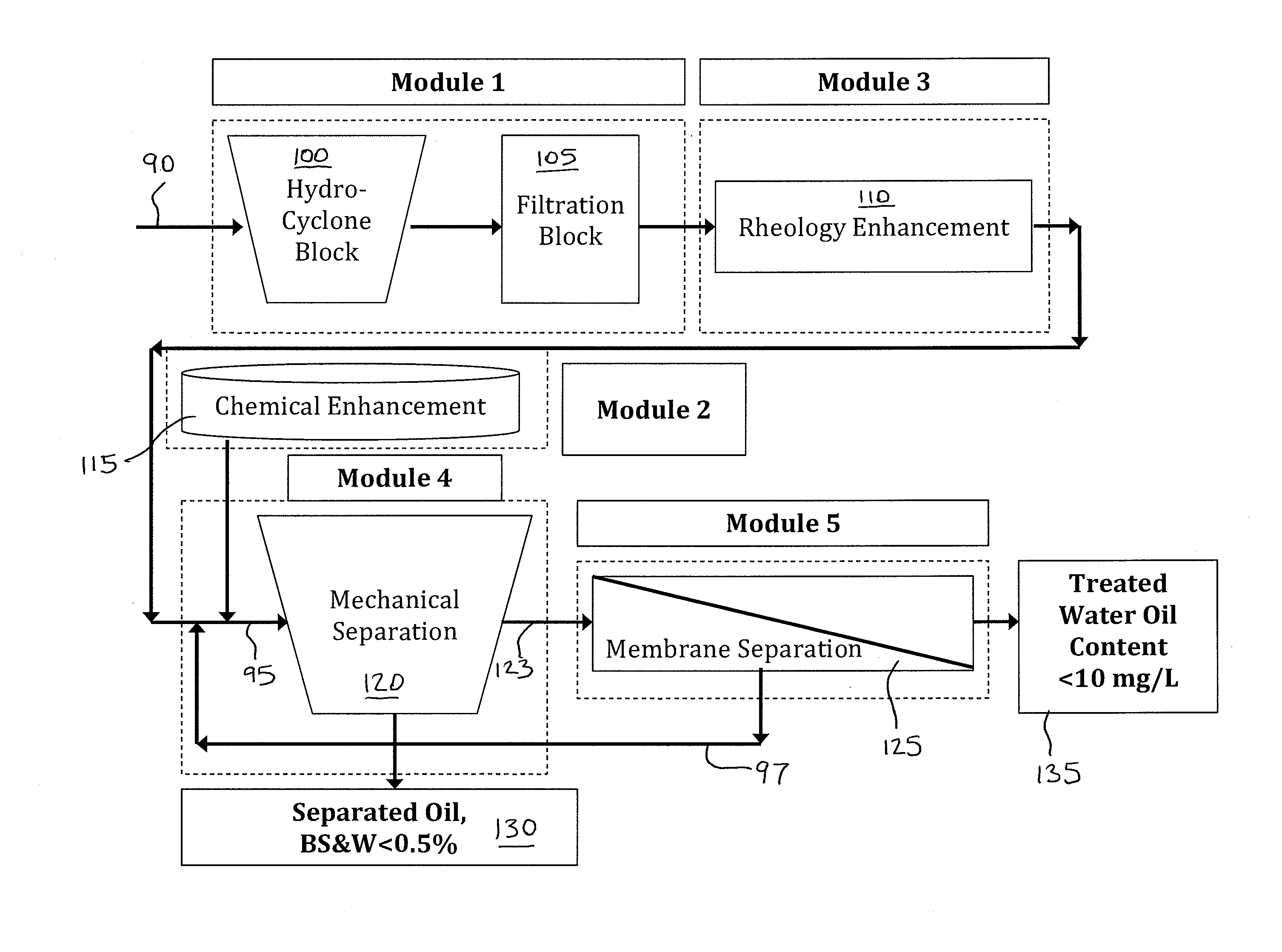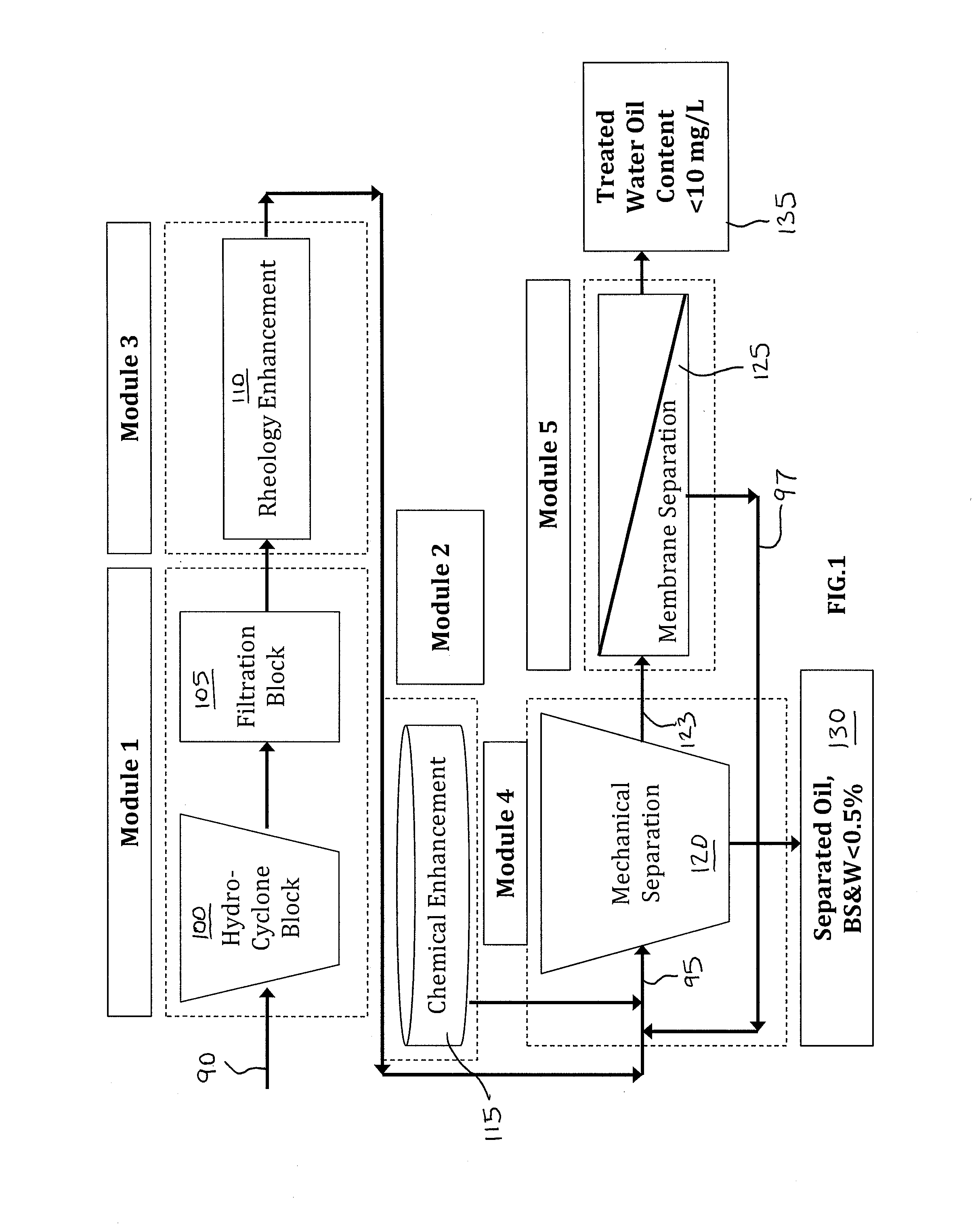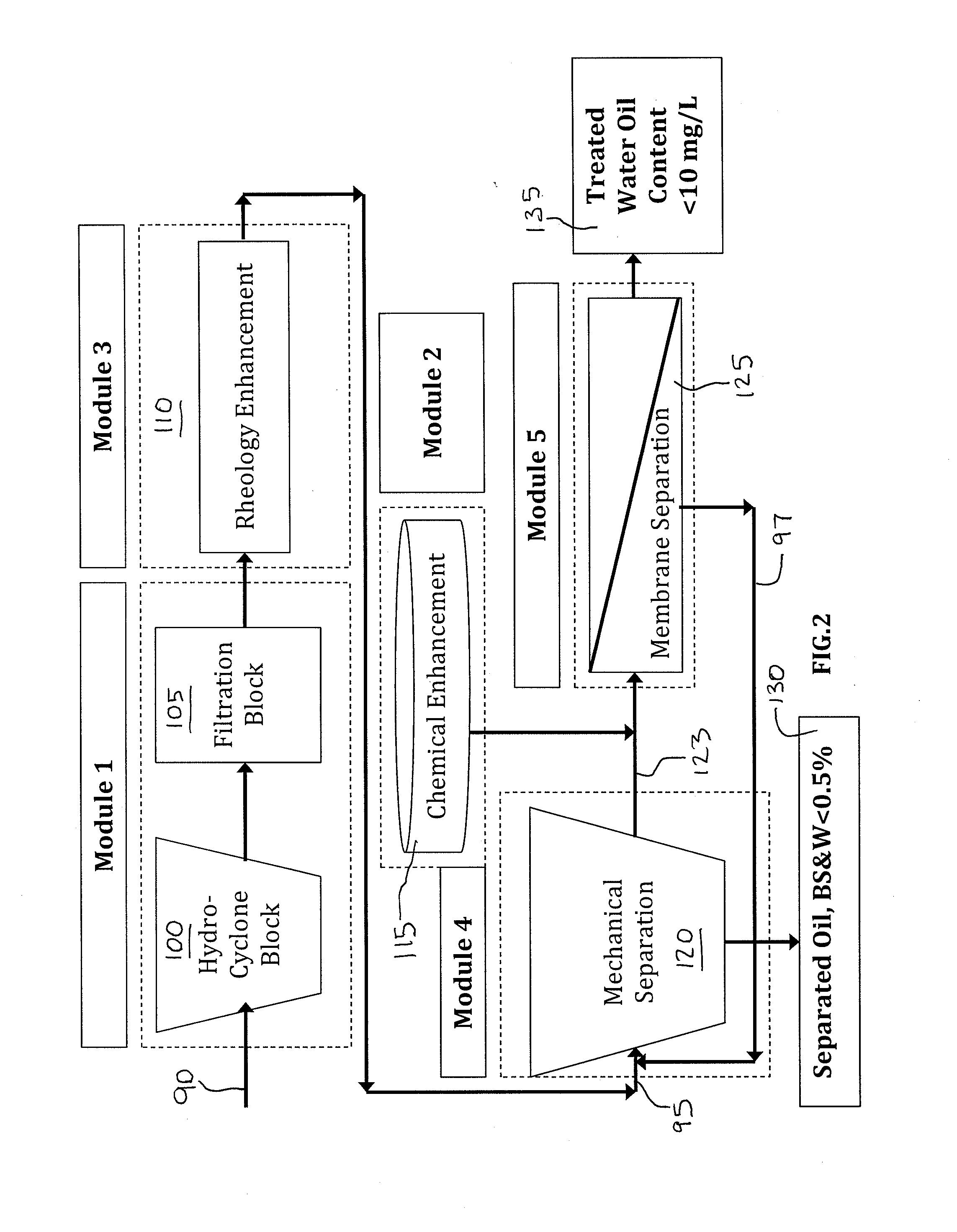System And Method For Mechanical And Membrane Oil-Water Separation
a technology of mechanical and membrane oil water and oil water, applied in the field of oilwater separation, can solve problems such as waste streams, and achieve the effect of reducing the amount of oil and reducing the amount of particulates
- Summary
- Abstract
- Description
- Claims
- Application Information
AI Technical Summary
Benefits of technology
Problems solved by technology
Method used
Image
Examples
example
Influent “C”
[0037]
TABLE C-1Operational Inputs for Influent “C” Example:Oil Effluent WaterWater Effluent OilContent (Vol. %)Content (Vol. %)Unit A950.02Unit B100.5Unit CMembrane Pre-treatment60%Oil RemovalMembrane Rejection99%Membrane permeate75%recovery
TABLE C-2Influent “C” Example: Specifications for Stream 1 (Influent 1at input 95), Stream 2 (Effluent 2A at output 135),and Stream 3 (Effluent 1B at output 130):Flow Rates (GPM)Oil / WaterStreamOilWaterconcentration10.03 29.97Oil Content: 0.1 vol. %53 × 10−529.94Oil Content: 1 mg / L90.0250.003BS&W Content: 10 vol. %
TABLE C-3Influent “C” Example: Separated oil andtreated water recovery and waste production (showinginvention's ability to minimize waste streams):Flow rate (GPM)Yield (%)Oil0.02583.77Water29.9499.89Overall Influent Recovery99.88%Waste0.12
PUM
| Property | Measurement | Unit |
|---|---|---|
| chemical dosing | aaaaa | aaaaa |
| rheology | aaaaa | aaaaa |
| particle size | aaaaa | aaaaa |
Abstract
Description
Claims
Application Information
 Login to View More
Login to View More - R&D
- Intellectual Property
- Life Sciences
- Materials
- Tech Scout
- Unparalleled Data Quality
- Higher Quality Content
- 60% Fewer Hallucinations
Browse by: Latest US Patents, China's latest patents, Technical Efficacy Thesaurus, Application Domain, Technology Topic, Popular Technical Reports.
© 2025 PatSnap. All rights reserved.Legal|Privacy policy|Modern Slavery Act Transparency Statement|Sitemap|About US| Contact US: help@patsnap.com



